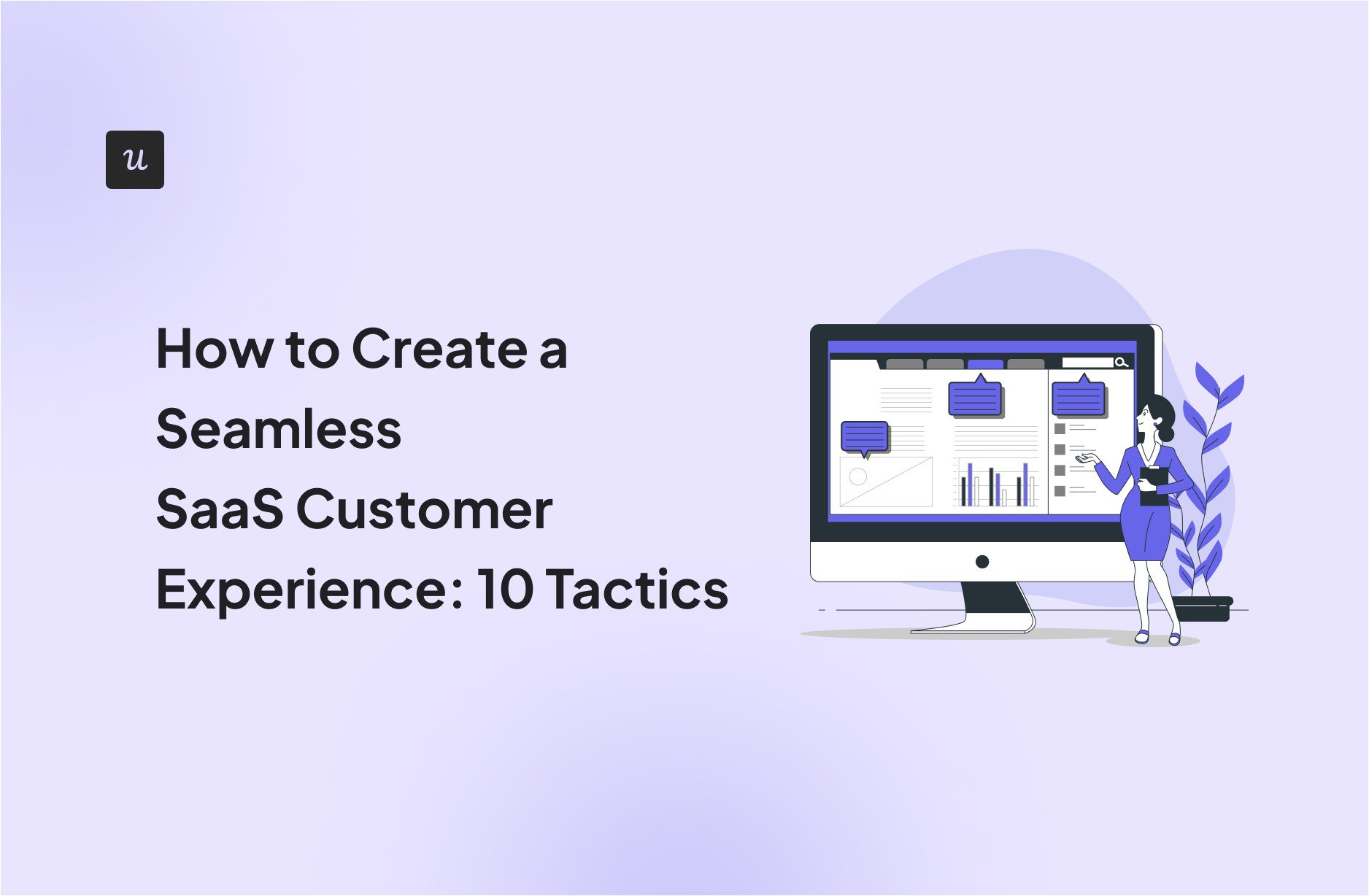
Try Userpilot Now
See Why 1,000+ Teams Choose Userpilot

What is SaaS customer experience?
SaaS customer experience refers to all the interactions a user has with a software brand. It involves every customer interaction from initial contact, through onboarding, continuous support, and every upgrade or renewal.
A positive customer experience is crucial to drive user engagement, retention, and loyalty—which are impactful factors in the success and growth of a SaaS company.
Why is positive customer experience so important for SaaS companies?
As mentioned earlier, a positive customer experience has a direct influence on customer retention, satisfaction, and overall business growth.
In SaaS, where users have a lot of options, a superior customer experience helps your product stand out. As a result, it leads to positive results in multiple ways including:
- Increased customer loyalty: Happy customers are more likely to stay subscribed and use additional features or services.
- Enhanced brand reputation: Satisfied customers often recommend the service to others, expanding positive word-of-mouth.
- Reduced churn rates: A positive experience diminishes the likelihood of customers canceling their subscriptions.
- Higher customer lifetime value (LTV): Engaged and satisfied customers are more likely to make additional purchases and upgrade their plans.
How to create an exceptional customer experience strategy
Now, there are 4 components to building a customer experience strategy that generates results:
Know your audience
The first milestone you need to check before improving your customer experience is to know your audience.
For this, perform extensive customer research with surveys, interviews, and product analytics. With this data, you can understand what job they need to get done with your product, what goals they have, and what path they should take to achieve success.
Then, group your user base into different segments to create user personas based on their JTBDs, job titles, use cases, goals, stages of their journey, and in-app behaviors.
This will open the door to offering personalized product experiences that are engaging and valuable for your user personas.
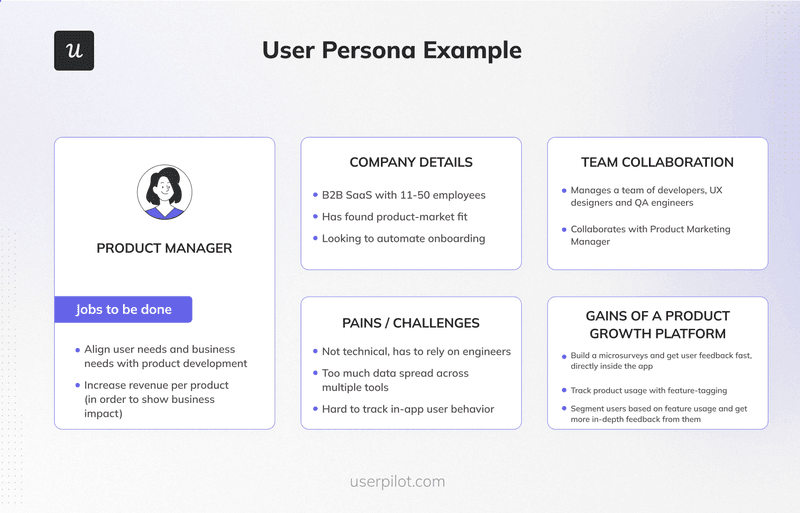
Understand the paths your users take
Once you’ve collected enough data from your user, you can use path analysis to identify the happy path for each persona (i.e. each user segment).
You see, the happy path is the series of steps a user takes to achieve the desired result without encountering any error or friction. This includes how long they engage with the product, what features they use, and their overall progress through the user journey.
With this data, you can find opportunities to improve the customer experience as you find points of friction and insights.
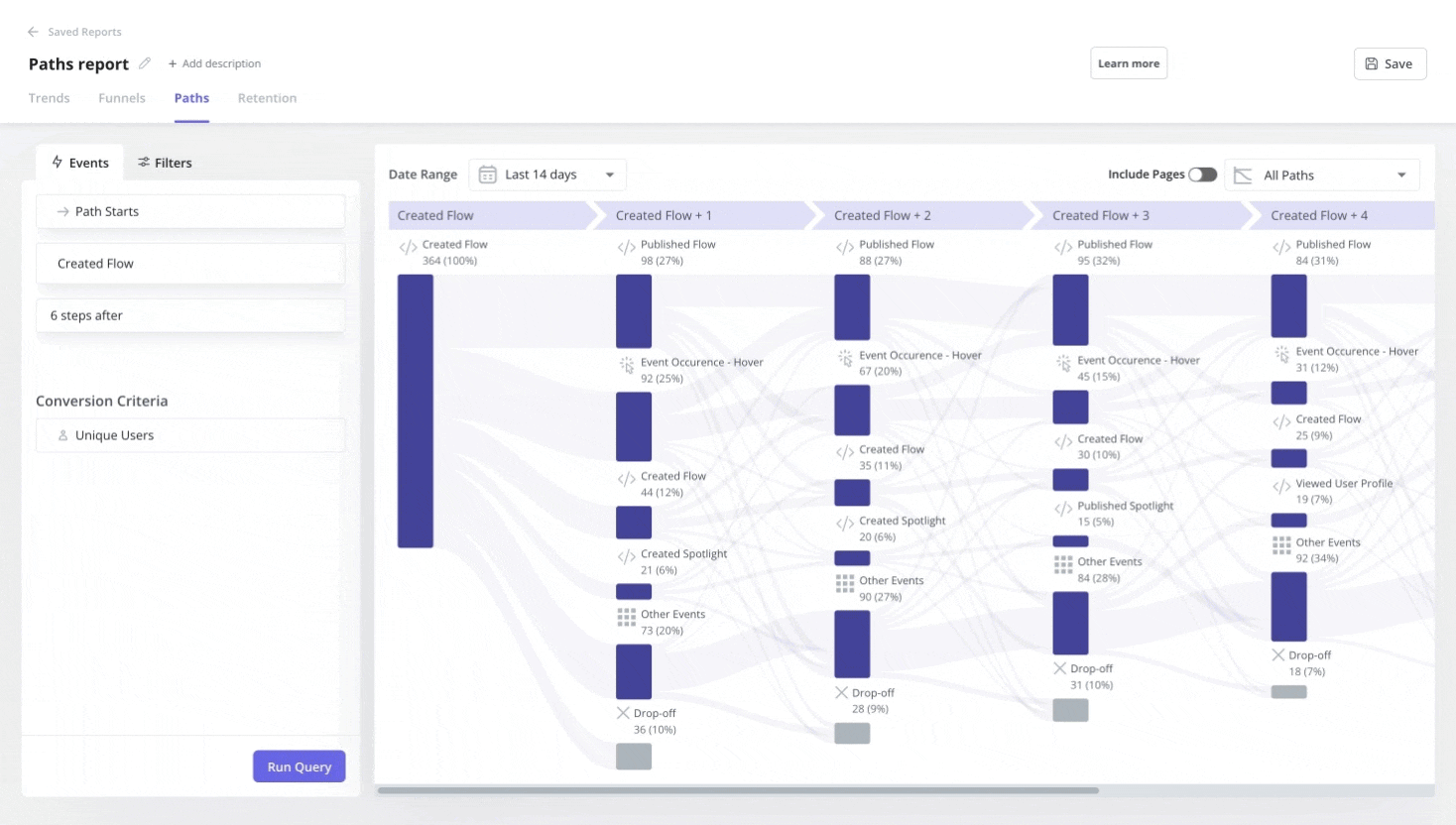
Optimize those paths
After you understand how users navigate your product, you can use in-app guidance such as tooltips, checklists, and tutorials, to shape the product experience to keep users on the happy path.
For example, if a user attempts to use an advanced feature they’re not ready to adopt yet, you can trigger a small tooltip to advise it to use a core feature instead.
This way, users will be more likely to have a smooth product experience, keep using your app, and become loyal customers.
Measure and improve
Measuring your results is the base of an effective customer experience strategy.
With proper analytics, you can identify more friction points in the user journey and improve them. This process can involve tracking user behavior, mapping out the customer journey, and paying attention to key engagement metrics like churn rate, session length, and user activity.
For instance, if your funnel analysis indicates a substantial drop in engagement during the onboarding process, you can immediately know that you need to streamline it to make it more user-friendly or interactive.
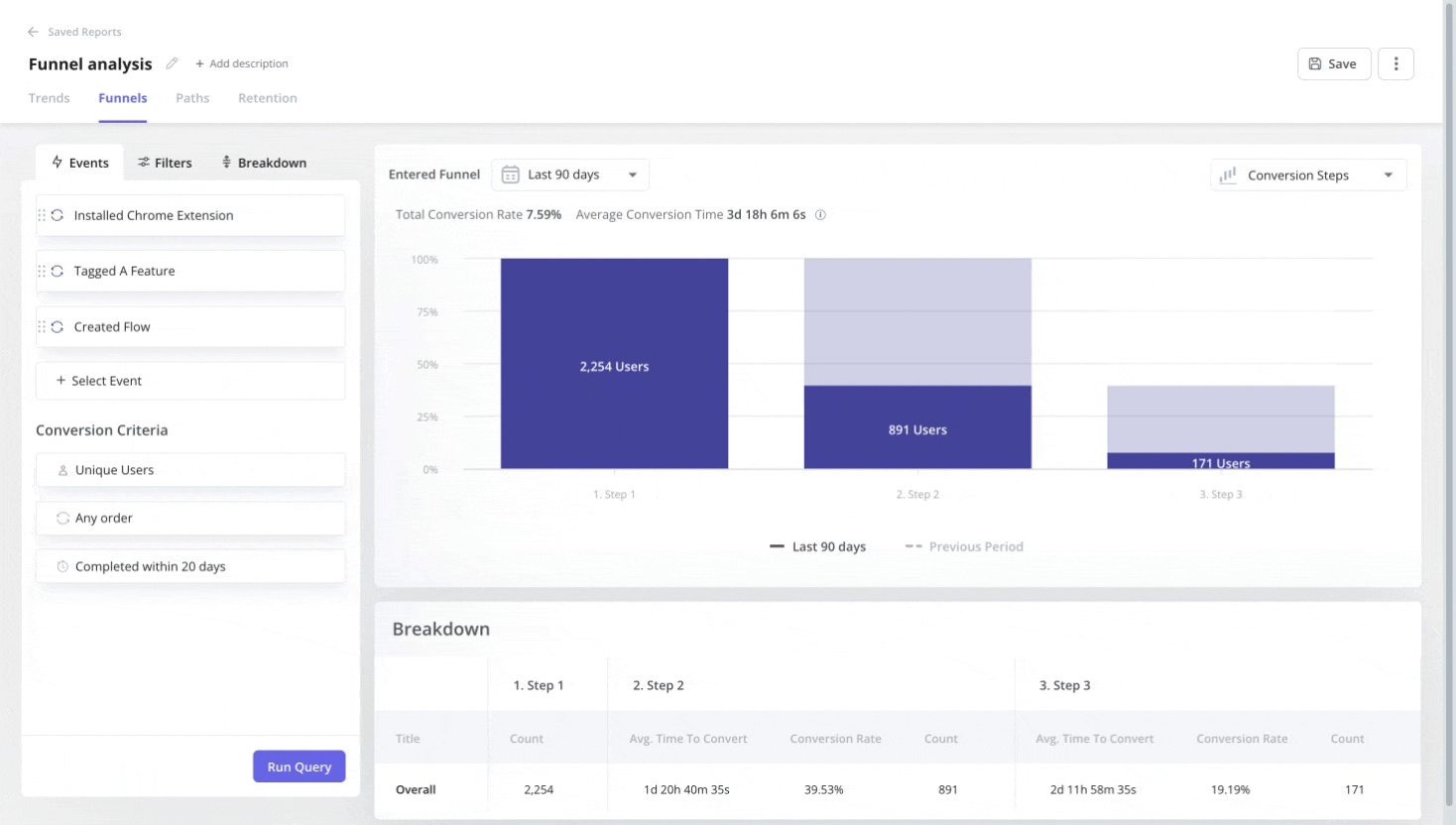
10 Strategies to improve SaaS customer experience
Now that you’re aware of the right components of a successful customer success strategy, it’s important to get into tactics.
Let’s go over 10 customer experience strategies.
1. Remove friction from the user journey to drive customer retention
Facing too many obstacles in your product won’t only frustrate users, it will incentivize them to churn and use another product instead.
On the other hand, removing friction from the customer journey makes success easier, keeps users engaged, and fosters a positive perception of the brand. And as a result, it helps prevent churn, retain users, and transform them into brand advocates.
To get started, you can:
- Implement Single Sign-On (SSO): Allow users to access your service using existing login information from other trusted services to speed up and simplify the login process.
- Eliminate Mandatory Email Verification: Consider reducing steps like mandatory email verifications to expedite the signup process.
- Trigger Welcome Surveys: Engage new users immediately with surveys to personalize their experience and gather valuable feedback.
- Use Progressive Profiling: Collect user information gradually over time to avoid overwhelming them at the start.
2. Deliver a personalized onboarding process based on customer data
According to a McKinsey study, 76 to 78% of consumers are more likely to purchase, recommend, and make repeat purchases from companies that personalize the customer experience.
One way to do this is by triggering welcome surveys to gather information such as the user’s industry, their role within their organization, or their main motivation for using your product. With that info, craft an onboarding path that addresses their specific jobs-to-be-done (JTBD) and responsibilities.
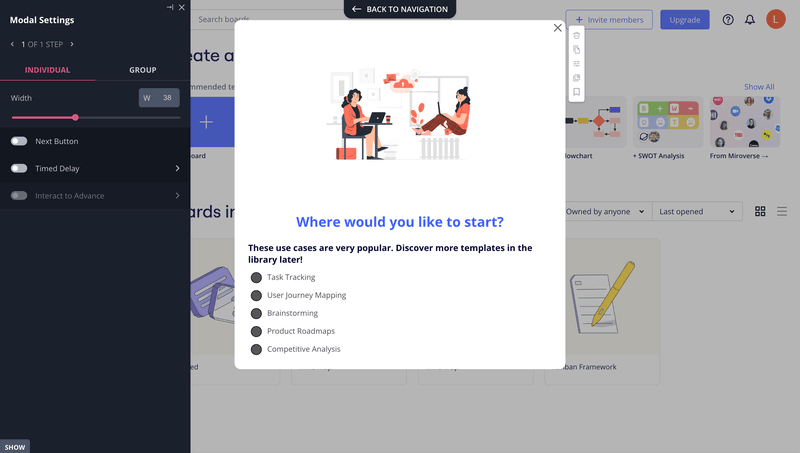
3. Make the customer journey interactive
Another way to elevate the customer experience is to make the customer journey more interactive.
So instead of showing a generic product tour that users are likely to skip, you can:
- Implement an interactive walkthrough to hand-hold users step by step.
- Design an onboarding checklist to provide users with a blueprint to achieve the activation stage.
- Add gamification elements like badges, levels, and achievements to keep users engaged.
- Create loyalty programs where users can receive valuable rewards for performing tasks.
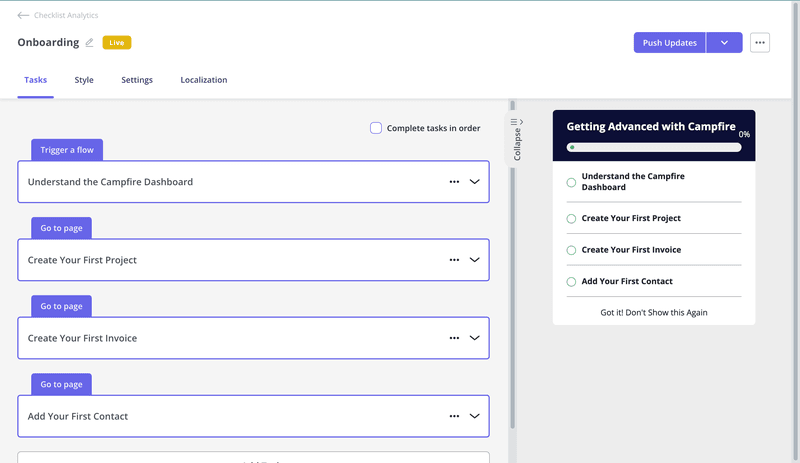
4. Improve customer support with an in-app resource center
A great opportunity to enhance the customer experience is by building an in-app resource center.
The reason is simple: it prevents users from leaving your app to solve their issues (experiencing friction in the process). Thus, customers are more likely to stay engaged with your app.
The process for creating an effective knowledge base is simple:
- Communicate with your customer service team to identify common issues that make customers drop off and disengage.
- Survey your users, review your support tickets, and examine your usage data to see what’s causing friction and pushing customers away.
- Create help resources in different formats to directly tackle these challenges. It can include FAQs, tutorial videos, step-by-step guides, or help articles.
- Organize your resources in content modules so users can find resources that are relevant to them (instead of having to browse through messy documentation).
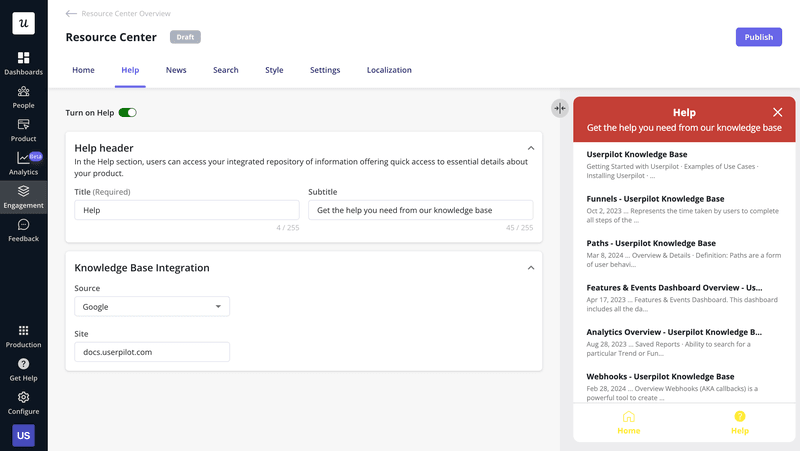
5. Collect customer feedback to improve customer satisfaction
The best way to improve the customer experience is by asking your existing users directly. After all, they’re the ones using your product.
Thankfully, you can segment your users and target in-app surveys such as CES (customer effort score), CSAT, and NPS surveys to understand their points of view. This way, you can collect relevant feedback to their specific needs, improve their product experience, and close the feedback loop.
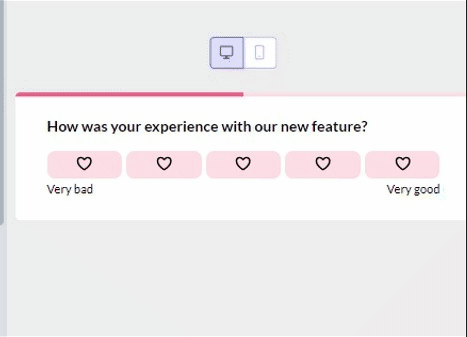
6. Deliver proactive customer service
Customer data is not only a great way to understand your audience’s pain points, needs, and desires. It’s also a useful way to provide proactive customer service.
This is because you can analyze what’s causing friction, address it, and prevent users from having to search online or reach out to a customer service representative or the customer success team.
For instance, if the usage metric of a specific feature is low, it is a good indication that you need to improve the user experience to fix it—either by adding more in-app guidance or reshaping your UI.
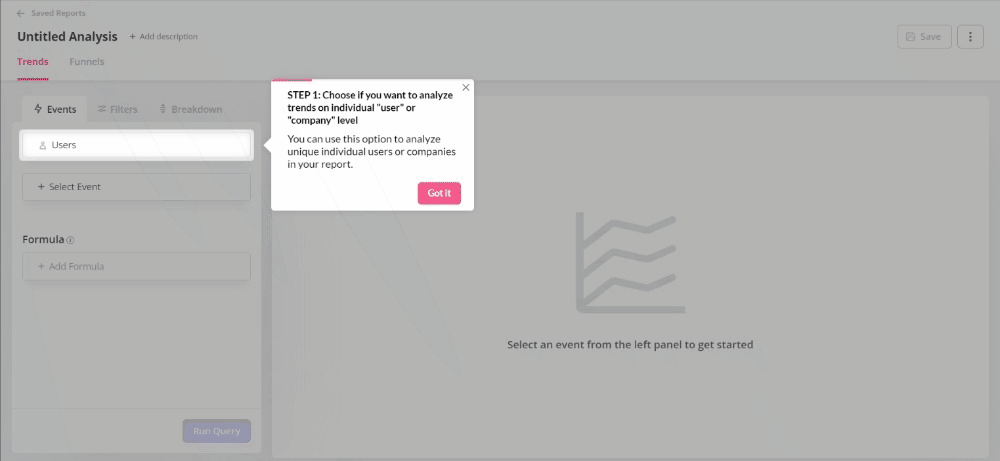
7. Provide continuous education
Educating customers about your product is a constant, never-ending task. But when done well, it will keep users engaged with your app as they find success with it.
This can involve engaging existing users with educational content such as:
- Webinar series (like Userpilot events).
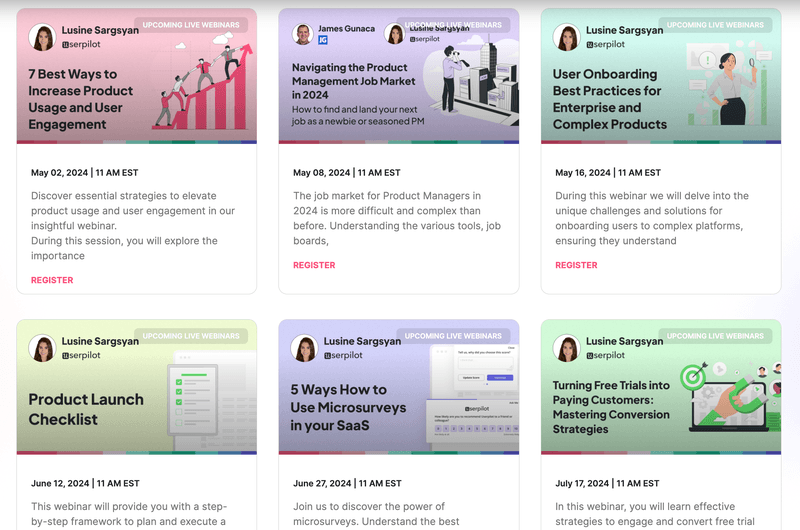
- Video tutorials.
- Schools.
- Secondary onboarding strategies (interactive walkthroughs, checklists, etc).
This way, instead of expecting users to learn by themselves, you can provide them with the information they need, when they need it.
8. Foster customer loyalty with loyalty programs
One way to build customer loyalty is to set up a loyalty program where customers are awarded points each time they take a desired action, and those points can be exchanged for credits, free months, etc.
These desired actions can involve:
- Following you on social.
- Making a purchase.
- Writing a review.
- Completing surveys.
- Bringing referrals.
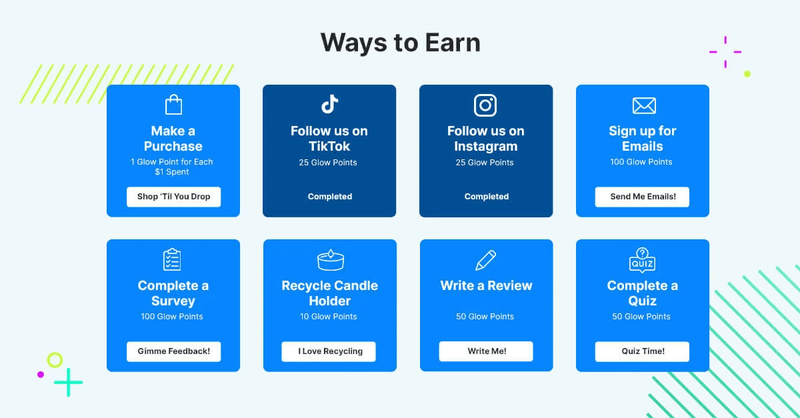
9. A/B test different flows to see which has better customer interactions
One effective way to optimize the customer experience is by A/B testing the product experience.
This involves creating two different versions of in-app content (announcement, onboarding tutorial, etc.) and then testing them with your user base to see which one resonates better.
For example, let’s say you need to optimize feature usage in your onboarding process. In version A, you can have a series of video tutorials. While version B includes interactive walkthroughs.
With A/B testing tools, you’ll be able to analyze the time spent on each version, completion rates, and feature usage—and determine which version performs better.
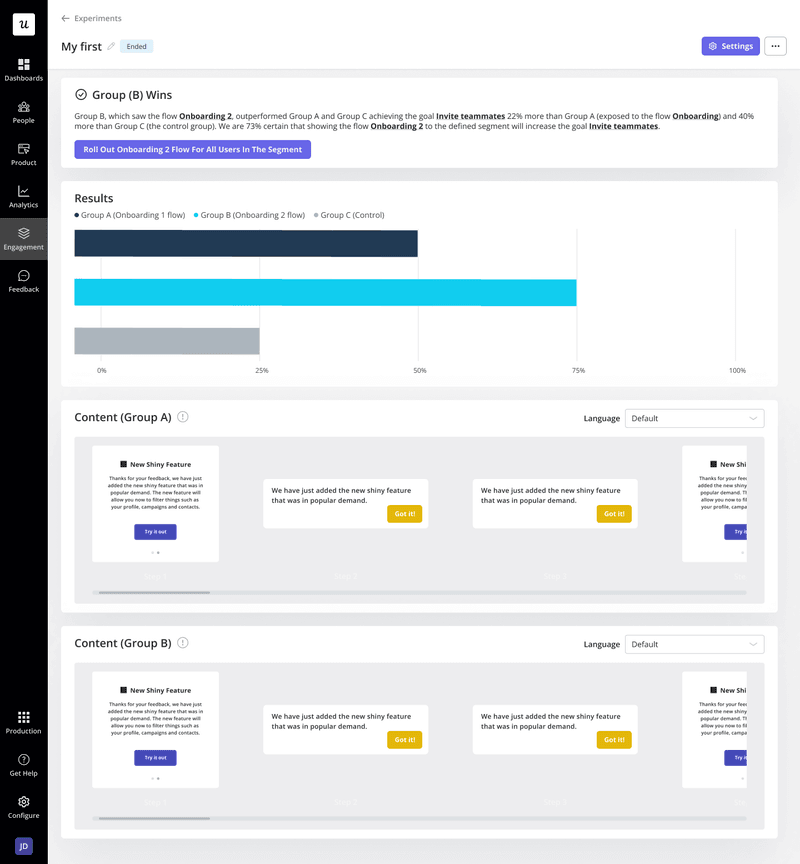
10. Understand reasons behind churn to iterate your CX strategy
No matter how good your customer experience strategy is, churn is inevitable.
But with a user offboarding process, you can learn why a customer leaves, improve the product experience for the other users, and even reach out to ex-customers once problems are fixed.
To do this, you can trigger a churn survey when the user hits “cancel.” Ask what went wrong and improve your CX strategy to get a step closer to building a seamless customer experience.
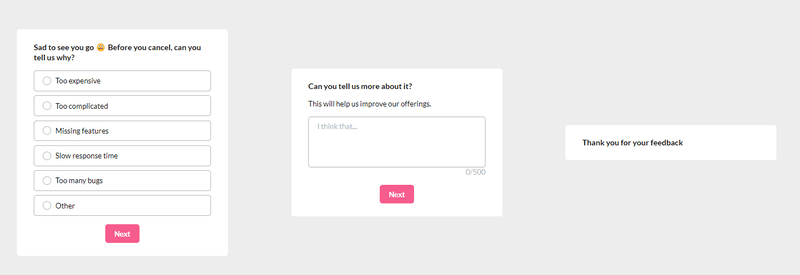
Conclusion
In SaaS, a smooth customer experience is essential for retaining customers, creating a competitive advantage, and growing your brand.
Whether you’re crafting engaging in-app guides, providing proactive customer service, or gathering user feedback, every step is needed to keep your business healthy.
And since you’ll need specialized tools to implement the strategies above, why not book a Userpilot demo to see how you can shape the customer experience without coding?








